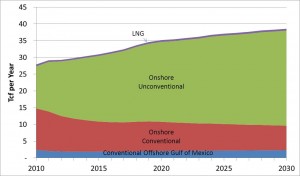A new ICF International study – available here – was released yesterday, commissioned by New York City Mayor Michael Bloomberg, focused on the inherent benefits tied to the expanded use of clean-burning American natural gas. Commenting on the study’s findings, Mayor Bloomberg said “Natural gas is a low-cost, low-emissions fuel that makes good economic and environmental sense.” Added the mayor: “This study confirms [natural gas’] importance to New York City’s reliable, clean energy future.”
And highlighting the clear, undeniable benefits associated with American natural gas, Sergej Mahnovski, Director of Energy Policy in the Mayor’s Office, said “New York City has benefitted from increased domestic gas supplies over the past few years in the form of cleaner air, fewer greenhouse gas emissions, and lower energy costs.” Mr. Mahnovski notes that natural gas also “will help achieve our public health goals while improving reliability and promoting economic growth.”
Indeed, according to the new study, increased natural gas production in the northeast – primarily from the Marcellus Shale enabled by horizontal drilling and hydraulic fracturing – has reduced prices across the U.S. for consumers and manufacturers. Further, the study found that approximately 30 percent New York City’s natural gas supply today is derived from regional shale deposits, and that amount is expected to grow to 80 percent by 2025.
Below is a graph from the study detailing projected North American natural gas supply increases through 2030, with shale gas providing the overwhelming amount.
Projected U.S. and Canadian Gas Supplies
What’s clear – and as laid out in several additional key study findings below – is that New York State residents and consumers, including those in upstate, New York City and Long Island, all stand to continue to greatly benefit from the safe and tightly-regulated development of clean-burning American natural gas.
Key Study Findings:
- Approximately 57 percent of New York City’s energy use is fueled by natural gas.
- By 2030, 80 percent of the total Northeast gas demand of 5.4 Tcf is met from Marcellus Shale production.
- ICF forecasts major shifts in the sources of gas supply for the New York City region as a consequence of the growth of Marcellus Shale gas production. Northeastern supplies, including Marcellus Shale and Utica Shale production, increase from 13 percent of New York City supply in 2005 to 88.5 percent by 2030. … LNG supplies also should decline substantially as LNG imports fall in the face of shale gas output.
- Within New York City, most power plants already use natural gas as their primary fuel source.
- With the recent development of new shale gas supplies, and their abundance, North American production will keep pace with this growth in demand at gas prices that are moderate, compared to recent history. Indeed, gas prices are expected to remain moderate over the 2010 to 2030 period. By the end of the forecast period, ICF believes that over 80 percent of the gas going to New York City will be shale gas from nearby areas.
- In sum, this study concludes that…natural gas will create significant GHG reductions [for New York City].





